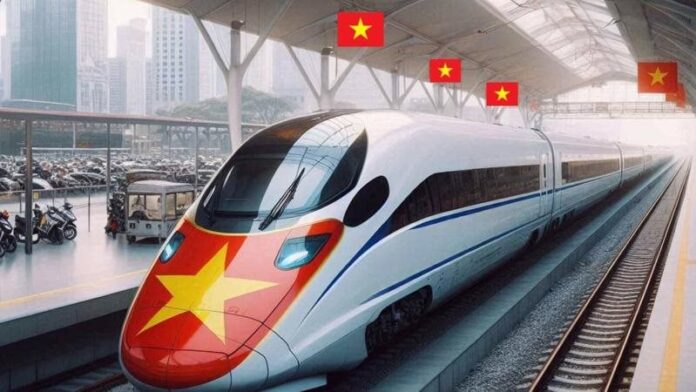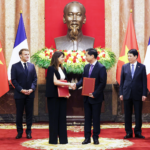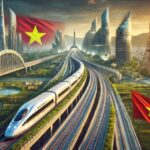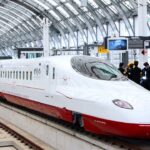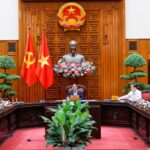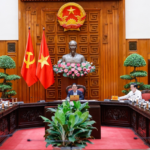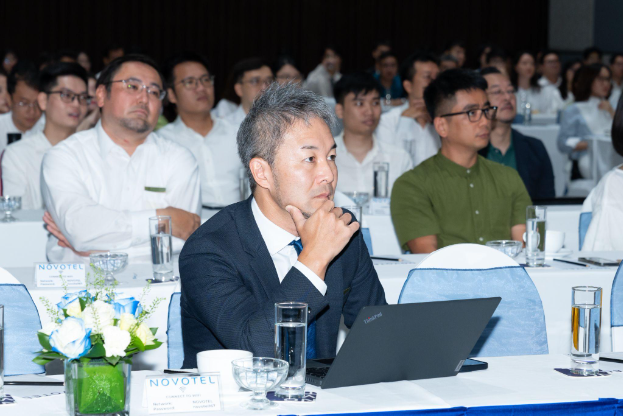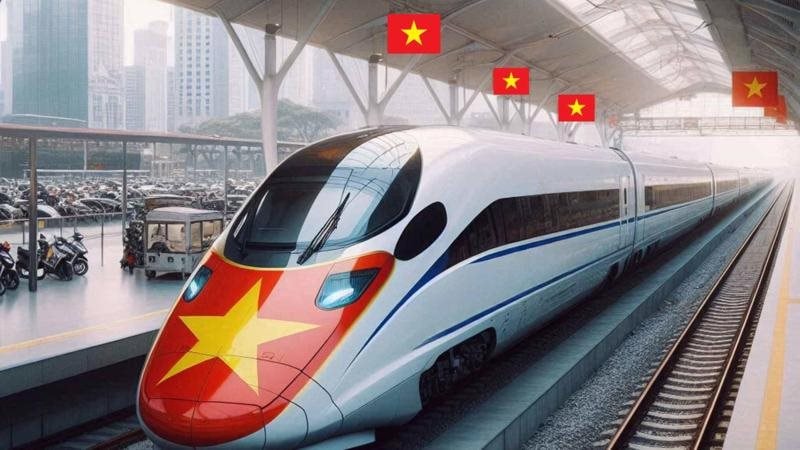
The Ministry of Science and Technology is drafting a decree on scientific and technological development, research, application, and technology transfer for the railway project.
The Ministry stated that the draft decree closely follows the spirit of the Central Committee and the Politburo, including Conclusion 49-KL/TW, which requires “cooperation in technology transfer in the field of railway transport, especially urban and high-speed railway technology,” and Resolution 57-NQ/TW, which calls for “pilot mechanisms to allow enterprises to test new technologies under state supervision” and “policies to exempt organizations, enterprises, and individuals from liability in the case of testing new technologies.”
The draft also has a legal basis in the directives of the National Assembly and the Government. For example, Decision No. 1769/QD-TTg of 2021 by the Prime Minister requires “the development of the railway industry in association with the research and transfer of advanced technologies, especially high-speed and urban railways.”

The Ministry affirmed that with the goal of commencing the North-South high-speed railway project in December 2026, technology transfer is an important component that needs to be institutionalized.
Regarding risks in the railway project, Article 10 of the draft decree states that “organizations and individuals who preside over scientific and technological tasks for the railway project shall be exempt from liability in accordance with the Law on Acceptance of Risks in Scientific Research and Technological Development.”
Article 10 also stipulates that “organizations and individuals conducting scientific and technological research using state budget funds for the railway project shall not have to refund the expenses incurred, in accordance with the Law on Acceptance of Risks in Scientific Research and Technological Development.”
In terms of incentives for enterprises undertaking scientific and technological tasks, Article 8 of the draft decree states that enterprises shall enjoy incentives equivalent to high-tech enterprises as prescribed in the Law on High Technology.
The incentive policies include exemption from corporate income tax; exemption from import tax on raw materials, supplies, and components that are not yet produced domestically for a period of five years; and exemption from land rent when investing in scientific and technological projects in High-Tech Parks.
Regarding the criteria for selecting organizations and enterprises, Article 12 of the draft decree sets out requirements, including “sufficient scale of factories and infrastructure to receive, install machinery, equipment, and technology lines”; “financial resources or the ability to mobilize financial resources sufficient for settlement and finalization of costs for receiving technology transfer”; “experience in international cooperation on technology transfer”; and “commitment to ensure the completion of the reception, mastery, and operation of the transferred technology.”
Recently, the Truong Hai Auto Corporation (THACO) and VinSpeed High-Speed Railway Development and Investment Joint Stock Company, a member of the Vingroup ecosystem, have submitted proposals to invest in the North-South high-speed railway project.
In Ho Chi Minh City, Vingroup has proposed to invest in a 48.5-km high-speed urban railway line connecting the city center with Can Gio.
A consortium of Dai Dung Group, Construction Corporation No. 1 (CC1), and Hoa Phat Group has recently sent a document to the People’s Committee of Ho Chi Minh City proposing to participate as an EPC contractor (design, construction, and equipment supply) for urban railway projects in the city.
The consortium expressed its desire to research and invest in three key railway lines: the Metro Line 2 (Ben Thanh – Tham Luong), the Thu Thiem – Long Thanh line, and the New City of Binh Duong – Suoi Tien line.
Most recently, Gamuda Group and Vietjet, a company owned by Ms. Nguyen Thi Phuong Thao, have also expressed interest in developing metro lines such as the one connecting the city center to the airport and Metro Line 2.
“Sanofi and VNVC Sign a Technology Transfer Partnership for Vaccine Manufacturing.”
On May 26, in Hanoi, in the presence of President Luong Cuong and French President Emmanuel Macron, Vietnam Vaccine Joint Stock Company (VNVC) and Sanofi, a French pharmaceutical company, signed an agreement for technology transfer of Sanofi’s vaccine production technology to VNVC’s Vaccine and Biological Production Plant in Vietnam.
“THACO Proposes High-Speed Rail Investment for North-South Corridor, Envisioning a 7-Year Construction Timeline”
“Vietnam’s leading automotive manufacturer, Truong Hai Auto Corporation (THACO), has expressed its interest in investing in the country’s high-speed North-South railway project. In a recent proposal to Prime Minister Pham Minh Chinh, THACO has showcased its ambition to diversify its portfolio and contribute to the nation’s infrastructure development.”
“Vietnam’s North-South High-Speed Rail: Catalyzing the Nation’s Industrial Renaissance”
High-speed rail networks in Japan, South Korea, and China have done more than just bridge geographical gaps and connect regions; they have catalyzed the formation of high-tech industries worth hundreds of billions of dollars. With the proposed North-South high-speed rail project, Vietnam stands at a “once-in-a-century” opportunity to forge a new industrial springboard for the nation on the threshold of its aspirational ascent.
“Handing Over the Resettlement Boundary of the Lao Cai – Hanoi – Hai Phong Railway Project in May 2025”
Prime Minister Pham Minh Chinh has instructed relevant ministries, sectors, and localities to expedite the completion of boundary handover and site clearance for the Lao Cai – Hanoi – Hai Phong railway project within May 2025. This directive aims to ensure that the construction of the project can commence simultaneously at five different points along the route on December 19, 2025.

